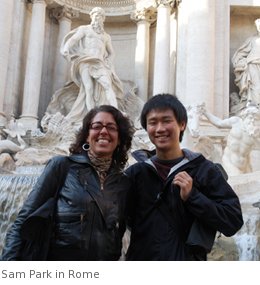 Students considering a gap year often worry about how to pay for it, especially now when many parents have lost jobs and household incomes have decreased.
Students considering a gap year often worry about how to pay for it, especially now when many parents have lost jobs and household incomes have decreased.
But there are ways to make taking time off affordable, so it doesn’t break the bank.
Myth: Gap year is only for the wealthy.
So, taking a gap year isn’t a modern day equivalent of the European Grand Tour, exclusively for the well-heeled?
No, says Holly Bull, president of The Center for Interim Programs, in Princeton, N.J., a consulting firm that helps students plan gap years. “There’s an assumption that programs have to cost a lot of money,” Bull says, “but you can combine more costly programs with room and board programs or do all room and board programs and have a really great year.”
Many programs offer room and board, and even stipends.
There are plenty of low- or no-cost service-oriented programs, like clearing trails in national parks, volunteering in a school for the deaf or at a fly-fishing lodge in New Zealand, or working as a deck hand on a ship. They may even offer stipends.
“Some are really quirky,” Bull says. In exchange for about $1,100 each, and labor, two young men are receiving room and board for a three-month stint at an eco-spa tree house-style B&B in Hawaii.
Domestic programs (no expensive airfares) and programs that include home stays with local families also limit costs.
Bull recommends that students with financial concerns contact programs to inquire about financial aid or scholarships.
Find creative ways to cut costs.
John Eastman, executive director of Global Learning Across Borders, a nonprofit group based in New York that focuses on international programs, says his organization works with students to defray costs.
In exchange for tuition reduction, students can work as ambassadors after the gap year, visiting schools to share experiences with prospective gappers. And students are briefed about self-funding strategies, like how to seek backing from community organizations or approach local newspapers about serving as foreign correspondents.
Structure the year to be able to work and choose programs wisely.
Sam Park, a 2008 graduate of New Trier High School, says being budget conscious did not limit his experience.
He studied writing, cooking and music in a cultural and language immersion program in Italy (in what Bull calls “the splurge”), took classes in Spanish, photography and surfing in Costa Rica, and interned in London with a member of Parliament at the House of Commons (both lower cost).
He also scheduled time to work, estimating that he paid one-sixth of his expenses, about four to five thousand dollars. “I felt an obligation to use whatever I had accumulated because it was for my benefit,” says Park, now a freshman at Indiana University.
Contributing encourages responsibility.
Marsha Ray, of Student Extended Experiences Consulting in Deerfield, often suggests to parents that their teens help pay part of the costs, even if it isn’t a necessity.
Having to bake bread at Panera at 6 a.m. is “age-appropriate pain,” she says. “It’s an authentic opportunity for students to be responsible and grow.”
Park, who stocked shelves, worked the register, made deliveries and bagged groceries at his parents’ grocery store during summers and babysat when he was at home between gap programs, agrees. “I felt more conscientious about how I spent my money. It was definitely a growing up experience.”

